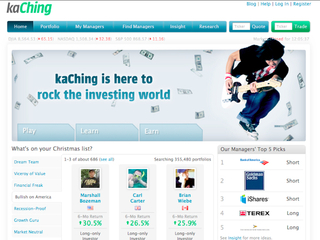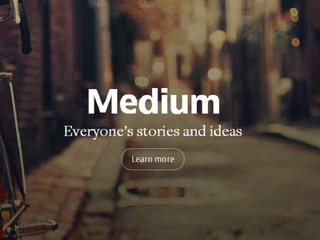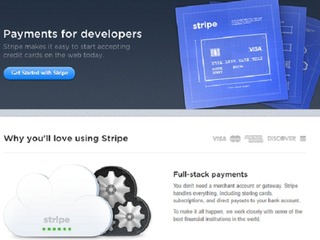When BetterHelp was young: the early years
BetterHelp and Vator have teamed up for Becoming Us, a virtual group therapy program
Read more...Editor's note: Our Splash Health, Wellness and Wearables event is coming up on March 23 in San Francisco. We'll have Mario Schlosser (Founder & CEO of Oscar Health), Brian Singerman (Partner, Founders Fund), Steve Jurvetson (Draper Fisher Jurvetson), J. Craig Venter (Human Longevity), Lynne Chou (Partner, Kleiner Perkins), Michael Dixon (Sequoia Capital), Patrick Chung (Xfund), Check out the full lineup and register for tickets before they jump! If you’re a healthcare startup and you’re interested in being part of our competition, learn more and register here.
Also, vote for your favorite healthcare startup before February 16! Vote here!
—————
As our readers know, Vator has started a series called When they were young.
It's a look back at the modest days of startups, what traction they had in their first few years, and how they evolved. In the end, we hope to provide a glimpse into what great startups looked like in their first three years.
Stories like these are always well received because it reminds us that anyone, regardless of pedigree and environment, can rise above the noise and have great influence. They show us the value of being resilient, persistent, and committed. If we can follow their footsteps, maybe we too can have similar success.
My last segment in this series focused on Wealthfront. This segment is on Medium.

Screenshot of Medium.com in August 2012 via Wayback Machine.
— Medium's First Year —
Founded/Launched: Medium was created by the Obvious Corp, an entity originally created in 2006 by Twitter co-founders Evan Williams and Biz Stone to buy back shares of Odeo (once a podcast service) from its venture capital backers.
In 2011, a year after Williams stepped down as CEO of Twitter, he joined Stone and former Twitter product lead Jason Goldman in relaunching Obvious as a company that "makes systems that help people work together to improve the world” by “developing products that matter."
Medium launched in August 2012.
Founders (ages at the time): Evan Williams (40)
Initial company description: "Medium is based on the belief that the sharing of ideas and experiences is what moves humanity forward. The Internet is the greatest idea-sharing tool ever imagined, but we’ve only scratched the surface of what it’s capable of." (via Williams' welcome post)
In its infancy, Medium let anyone read pieces, but only an exclusive group of users—family and friends of the company—could publish. Here's another detailed description from the company's launch:
"Posting on Medium (not yet open to everyone) is elegant and easy, and you can do so without the burden of becoming a blogger or worrying about developing an audience. All posts are organized into 'collections,' which are defined by a theme and a template. (For example, this post is in the About Medium collection with a simple article template.)
"We believe that good design supports the purpose (not just the appeal) of content, so Medium is diverse in look and feel—ranging from different types of articles to images to, eventually, much more.
"Collections give people context and structure to publish their own stories, photos, and ideas. By default, the highest-rated posts show up at the top, helping people get the most out of their time in this world of infinite information."
Early press - at three months from founding/launch: As one of Twitter's creators and former CEOs, Williams had no trouble garnering press for Medium in its early days. Most of the tech community didn't fully understand Medium, however, so most of Williams' appearances were about explaining how the new service differed from existing publishing platforms:
In one November 2012 interview, he explained that Medium was focused on longer-form, more quality content:
"People just care about junk food. Will they eat their information vegetables if they are available?" said Williams. "HBO is not the most popular, but they do really great stuff. I would rather be HBO than whoever produces 'Desperate Housewives,' even if they have more viewers."
First major hire - at three months from founding/launch: In November 2012, Medium hired Kate Lee (formerly a literary agent at International Creative Management) as its Director of Content.
Product update - at four months from founding/launch: In December 2012, Medium launched "Stats," giving users the ability to see "meaningful metrics" around how popular their pieces are. The company also explained its decision to not offer readers a way to comment on pieces—rare for a blogging platform:
"One thing you may have noticed about Medium is its lack of comments at the bottom of pages—which seems to have become an unfortunately ubiquitous feature of the web. We believe that normal web comments don’t add a lot of value on average (at least of the type we’re looking to create). However, we do think there is value to be had in reader feedback and interactivity. So, we’re working on a way of allowing reader participation (on an optional basis) that offers something new and different that comments don’t. We hope to have it on the site (at least to test out) by mid-January."

Traction - at six months from founding/launch: In February 2013, Obvious secured a new headquarters (photo above) at 760 Market Street in San Francisco, granting the organization more room to expand Medium and its other projects.
Business restructuring - at eight months from founding/launch: In April 2013, Williams announced that Medium would officially exit the Obvious Corp umbrella to operate as a standalone company:
"Medium — the main internal project of Obvious for the last few months — is now operating as its own company. We have 30 people focused on many big ideas for the site you’re reading now. Personally, I’m spending about 98% of my time on it."
Product update - at eight months from founding/launch: Later in April 2013, Williams announced a new feature to make it easier for users to collaborate on Medium posts. A "Share Draft" would appear in the top right of the editing screen so that users could share a piece with their peers, allowing them to add comments.
First acquisition - at eight months from founding/launch: Also in April 2013, Medium acquired Matter, a science and technology journalism startup created by former Guardian and GigaOm reporters. The size of the deal was not disclosed, but Matter had initially raised $140,000 from over 2,500 backers in a Kickstarter campaign.
Business model update - at 10 months from founding/launch: Around June 2013, Medium began paying publishers and editors to run collections on Medium. The idea was ultimately to create great content for the site, increase its traffic, and, ultimately, to figure out the business model for the site.
In the year following this new initiative, Medium "at any one time supported about 10-15 commissioned collections, accounting for fewer than 5 percent of the total posts published on the site on any given day."

Screenshot of Medium.com in August 2013 via Wayback Machine.
— Medium's Second Year —
Traction and business model - at one year from founding/launch: In August 2013, Bloomberg reported that Medium had 40 engineers and editors in San Francisco and a small office in New York. Additionally, traffic was still presumed to be fairly low: "A ComScore spokeswoman says the site doesn’t register on her company’s traffic scale."
As for business model, Williams said he couldn't see the typical advertising model working for Medium because banner ads would damage the site's aesthetic. So a business model had yet to be worked out.
Product update - at one year and two months from founding/launch: In October 2013, Medium opened writing capabilities to everyone—though it still required a Twitter login for signups.
Product update - at one year and four months from founding/launch: In December 2013, Williams launched what he was calling Medium 1.0, a revamp of the site that included updates to typography, spacing, design responsiveness, and new photo features. The update also changed how collections worked, making them moderated by a single creator (or "editor").
First VC funding - at one year and five months from founding/launch: In January 2014, Medium secured a $25 million round of funding from Greylock Partners, Google Ventures (now GV), Betaworks, Code Advisors, CAA Ventures, Science, and a long list of angel investors, including Ron Conway, Chris Sacca, Peter Chernin, Tim O'Reilly, Michael Ovitz, and Gary Vaynerchuk.
Greylock was the biggest contributor to the round and, as part of the deal, its general partners David Sze and Josh Elman joined Williams on Medium's board of directors.
Product update - at one year and seven months from founding/launch: In March 2014, Medium launched its first iPhone app, which only allowed users to read—not create or edit—posts. Two months later, in May, the app would also be available for iPad.
Business model update - at one year and seven months from founding/launch: In June 2014, Evan Hansen (then editor-in-chief at Medium) took to the site to provide an update on how Medium was paying a small subset of writers to create content on the site. In short, Hansen reaffirmed that the company had little interest in pursuing a "pay-per-click" model, but still hadn't figured out exactly whether it wanted to be strictly a platform for writers or its own publisher in the traditional sense.
At the time, Medium decided to pay some writers based on a "total time reading" metric while others were paid a flat commission fee.
Business model update and traction - at two years and eight months from founding/launch: In July 2014, Medium launched a BMW-sponsored collection called "Re:form," the site's first attempt at generating revenue for the site. It's unknown what BMW paid for this service, but Medium was quick to note that 99% of the approximately 40,000 articles published monthly to the site were not commissioned

Screenshot of Medium.com in August 2014 via Wayback Machine.
— Medium's Third Year —
Traction - at two years and three months from founding/launch: In November 2014, Medium reported that it was seeing nearly 20 million monthly unique visitors. That said, comScore said traffic to the site actually varied between 1-3 million uniques.
Business model update and product update - at two years and four months from founding/launch: In December 2014, Medium took another stab at its native advertising model through a sponsorship with Marriott International.
Around the same time, the company also redesigned the site. Changes included putting the "Medium" name on the homepage, making the notifications button more noticeable, and creating reading lists.
Major endorsements - at two years and five months from founding/launch: In January 2015, President Barack Obama broke with tradition by publishing the entirety of his State of the Union speech to Medium. (Traditionally, the speech was only sent in advance—under embargo—to journalists.)
Later that month, former Republican nominee Mitt Romney used the platform to announce that he wouldn't be running for president in 2016.
Product update - at two years and six months from founding/launch: In February 2015, Medium moved away from its focus on long-form content by adding features to make it easy to post short, quick posts to the platform. The news came on the heels of Tumblr doing the opposite—encouraging users to write longer-form posts.
Product updates - at two years and seven months from founding/launch: In March 2015, Medium launched a limited beta service giving publishers the ability to use custom domains for their Medium stories. Later that month, the company updated its iOS apps to allow users to edit (in addition to reading) posts.
Small updates would continue in rapid succession, with the service giving users to block other users in April. In May, Creative Commons licensing launched.
Product update - at two years and 10 months from founding/launch: In June 2015, Medium launched its Android app.

Screenshot of Medium.com in January 2017 via Wayback Machine.
— Medium Today —
Since its launch in 2012, Medium has raised approximately $132 million in equity funding from Andreessen Horowitz, Greylock Partners, GV, Lowercase Capital, and others. Its last round, a $50 million investment led by Spark Capital in April 2016, reportedly valued the company at $600 million.
Today, the company says it has an engaged network of "millions" of readers. A year ago, Medium said it had 85 employees and 25-30 million monthly visitors, but it no longer discloses number of active users or daily posts.
Medium's primary business model continues to be based on native advertising, or brand-sponsored articles that are featured on the site. Brands that have advertised on Medium include Google, Amazon, and BMW.
Obvious, the company that gave birth to Medium, has since transformed from Obvious Corp (something of a startup studio) to Obvious Ventures, a venture capital firm. Williams retooled the company into a VC firm in December 2014 with its mission being to invest in companies that make positive changes in the world.
BetterHelp and Vator have teamed up for Becoming Us, a virtual group therapy program
Read more...Ginger started by selling health data to providers, before pivoting to becoming a provider itself
Read more...Talkspace was originally called Talktala, and focused on video group therapy sessions
Read more...




